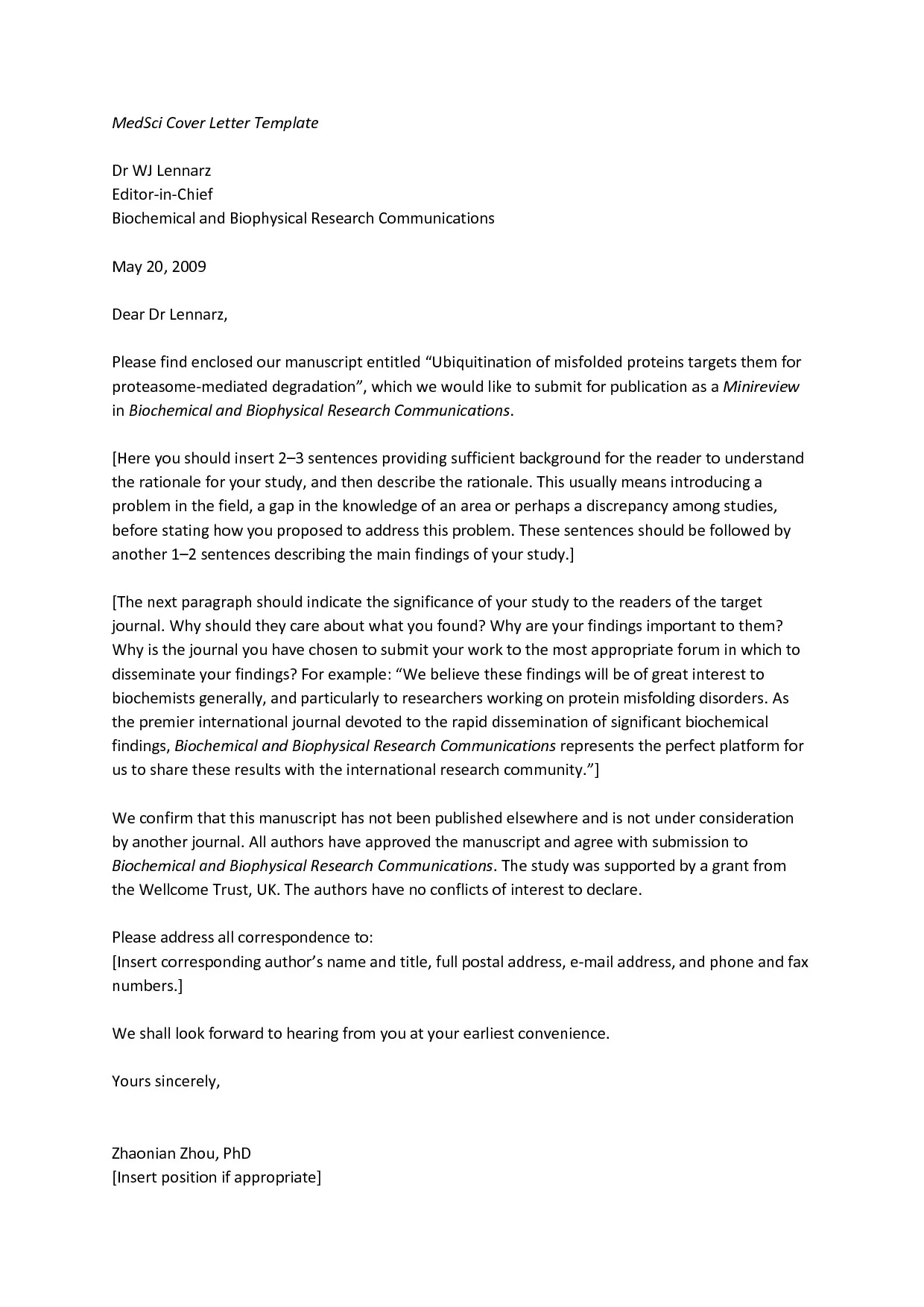Understanding the Cover Letter’s Importance
The cover letter is more than just a formality; it’s your initial and often most significant interaction with a journal editor. It serves as your introduction, a summary of your work, and a persuasive argument for why your research deserves publication. Think of it as the crucial bridge connecting your manuscript to the editor’s desk. A well-crafted cover letter is a strategic tool to grab the editor’s attention, effectively communicate the value of your work, and ultimately, boost your chances of acceptance. Ignoring the importance of this document can lead to rejection, regardless of the groundbreaking nature of your research. It’s an opportunity to frame your research to resonate with the journal’s focus and audience, setting a positive tone from the outset.
What is the Purpose of a Cover Letter
The primary purpose of a cover letter is to introduce your manuscript to the journal editor. It offers context, emphasizes your research’s significance, and convinces the editor that your work is a suitable fit for their publication. The cover letter concisely explains the main findings, the novelty of your work, and why it aligns with the journal’s scope and readership. It provides an opportunity to showcase your understanding of the journal and demonstrates that you have considered its specific audience and aims. Furthermore, a well-written cover letter helps establish a professional rapport with the editor, creating a positive initial impression that can influence the entire review process. It also acts as a record, offering essential details such as author information, manuscript title, and any special instructions or declarations, such as conflict of interest statements or funding acknowledgements.
Why is a Cover Letter Crucial for Journal Submissions
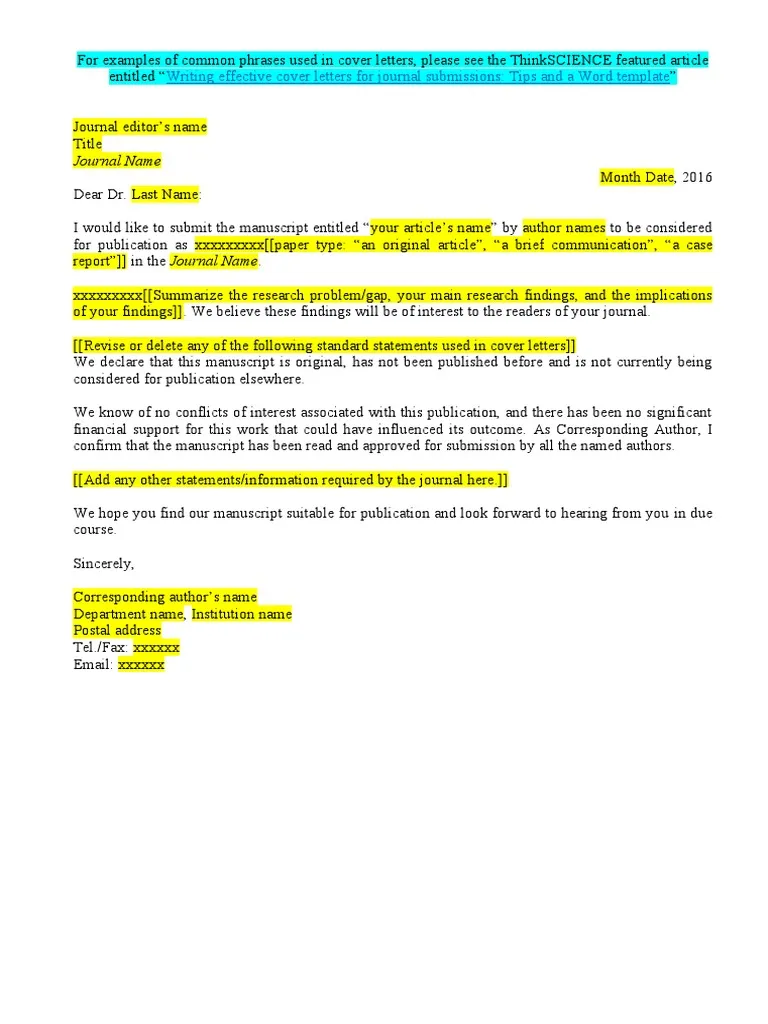
A cover letter is essential for journal submissions because it profoundly affects the editor’s initial perception of your work. It is your chance to set the stage and present your research in the most favorable light, emphasizing its importance and relevance. In a competitive academic landscape, where journals receive numerous submissions, a compelling cover letter can make your manuscript stand out. It also demonstrates your professionalism and attention to detail, both critical in scholarly publishing. The letter allows you to address specific journal requirements, showing you have carefully considered its guidelines. By explaining the significance of your findings and how they contribute to existing knowledge, you make a strong case for why your work deserves publication. A well-written cover letter dramatically improves your chances of getting your manuscript reviewed, and eventually, published.
Key Elements of a Compelling Cover Letter
A compelling cover letter includes several key elements. It must clearly state the title of your manuscript and the journal to which you are submitting. A brief, engaging summary of your research, including your main findings and their implications, is essential. The letter should highlight the novelty and significance of your work, explaining how it contributes to the existing knowledge in the field. It’s crucial to tailor the letter to the specific journal, demonstrating your understanding of its scope, audience, and editorial policies. Include a concise explanation of why your manuscript is a good fit for the journal. Ensure the letter contains relevant details, such as author information, contact details, and any specific requests or declarations, like conflict of interest statements or funding acknowledgments. The letter should conclude with a clear call to action, such as requesting consideration for publication.
Highlighting Your Research’s Significance
Effectively highlighting the significance of your research in a cover letter is crucial for capturing the editor’s attention. Begin by clearly stating your research question or problem and its importance within your field. Briefly explain how your findings contribute to existing knowledge and emphasize any novel aspects of your work that set it apart from previous studies. Use strong, impactful language to describe your findings and their potential implications. Consider mentioning any practical applications or real-world relevance of your research. Frame your work as a valuable contribution to the journal’s readership and explain how it aligns with the journal’s focus and mission. A clear and concise statement of significance helps the editor understand the value of your work and increases your chances of a positive initial review.
Clearly Stating Your Research Question
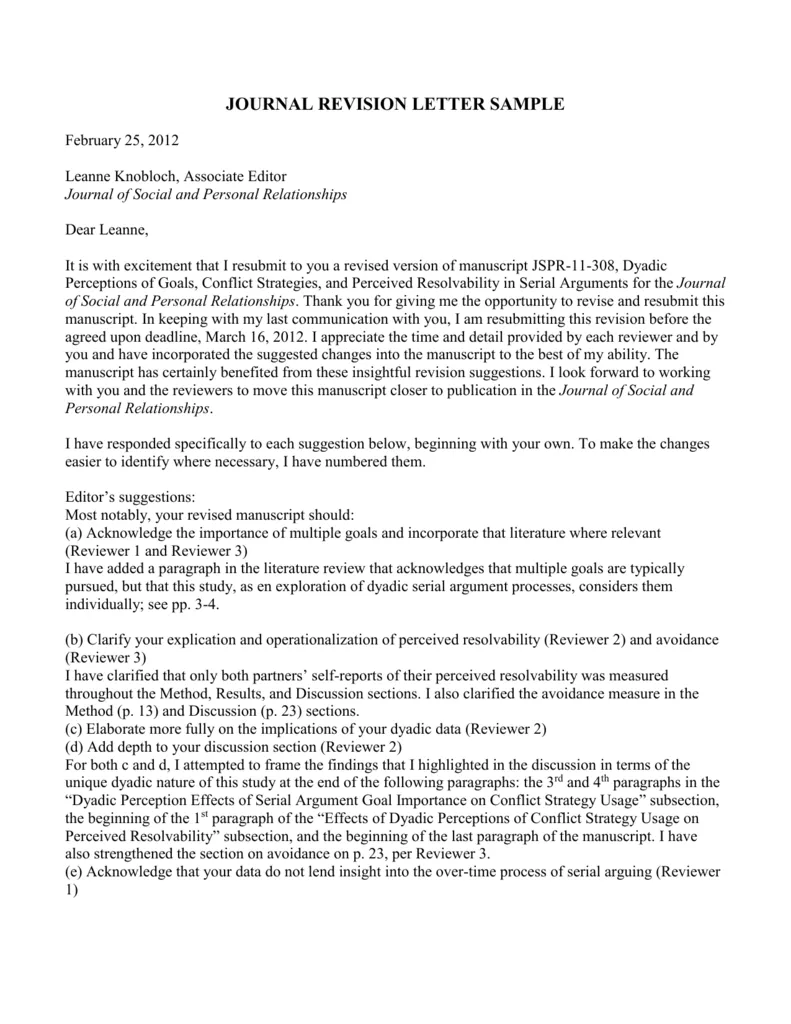
Clearly stating your research question is fundamental in a cover letter. Start with a concise statement that captures the core issue your research addresses. Avoid jargon and use language that is accessible to a broad audience. The research question should be directly relevant to your study and the journal’s scope. Briefly explain the context of your research, highlighting any gaps in existing knowledge or the need for further investigation. State the specific objectives of your study and what you aimed to achieve. Clearly presenting your research question from the outset enables the editor to immediately understand the focus of your work and its potential contribution to the field. It sets the stage for a persuasive explanation of your findings and their significance.
Summarizing Key Findings and Contributions
Succinctly summarizing your key findings and contributions is a critical part of your cover letter. Begin by stating your most significant results in a clear and concise manner. Avoid technical jargon and use language that is easily understandable. Highlight the implications of your findings, explaining how they address the research question and contribute to the existing body of knowledge. Emphasize any novel or unexpected results that set your work apart. Clearly articulate how your study advances the field or provides new insights. Mention any practical applications or potential impacts of your research. Make sure to frame your contributions in a way that aligns with the journal’s scope and the interests of its readership. A well-crafted summary of your findings demonstrates the value of your research and enhances the likelihood of a positive editorial review.
Emphasizing Your Work’s Novelty
Emphasizing the novelty of your work is essential in a cover letter because it highlights its unique contribution to the field. Clearly state what distinguishes your research from previous studies, and explain what new insights it offers. Point out any innovative methods, approaches, or perspectives used in your study. Highlight any gaps in existing knowledge that your research addresses. Explain how your findings challenge or extend current theories or practices. Demonstrate why your work is original and contributes to the advancement of the field. Make it clear what new information, concepts, or applications your research brings to the table. Show how your findings fill a void in the current literature and provide a fresh perspective. By effectively communicating the novelty of your work, you convince the editor of its value and relevance, increasing the chances of publication.
Tailoring Your Cover Letter to the Journal
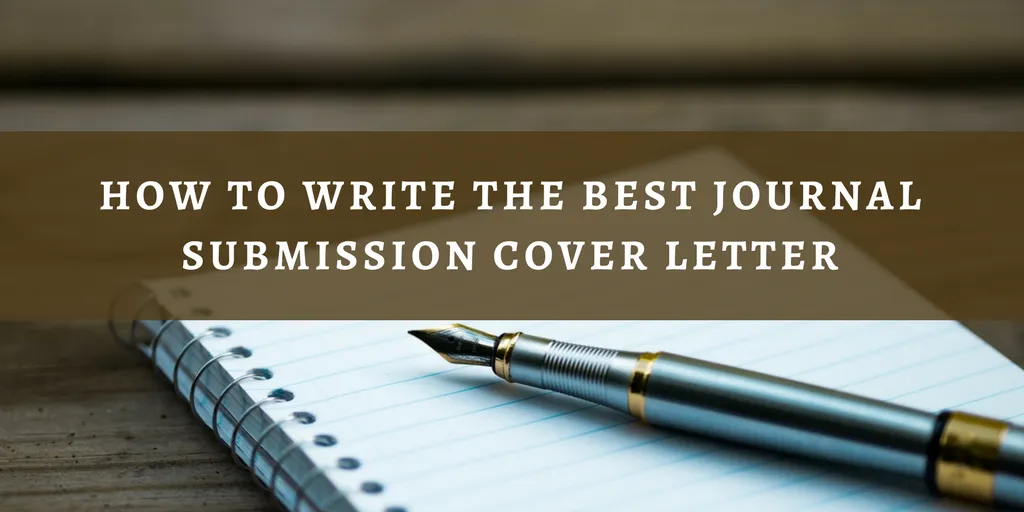
Tailoring your cover letter to the specific journal is a crucial step toward increasing your chances of acceptance. Research the journal thoroughly, paying close attention to its scope, target audience, and editorial policies. Analyze the journal’s published articles to understand the types of research it favors and the writing style it prefers. Address the editor by name, if possible, and customize the letter to show that you have carefully considered the journal’s specific requirements. Explain why your manuscript is a good fit for their publication and how it aligns with their aims and scope. Highlight any specific guidelines or preferences of the journal that you have followed in preparing your manuscript. Tailoring your cover letter demonstrates your professionalism, attention to detail, and commitment to the journal, which significantly enhances its impact and increases the likelihood of a favorable editorial decision.
Researching the Journal’s Scope and Audience
Thoroughly researching the journal’s scope and audience is fundamental to crafting an effective cover letter. Begin by examining the journal’s website, reading their “About” section, and reviewing their aims and scope. Identify the specific topics and areas of research the journal covers, and assess if your manuscript aligns with these areas. Analyze the types of articles the journal publishes, including their format, style, and length. Determine the target audience of the journal, which may include academics, practitioners, or both. Assess the level of technical detail appropriate for the audience. Look at recently published articles to understand the current trends and interests of the journal. Tailor your cover letter to demonstrate your understanding of the journal’s focus and how your research resonates with its target audience. Highlighting this alignment increases the likelihood of a positive response from the editor.
Addressing the Editor Directly
Addressing the editor directly in your cover letter is a sign of respect and professionalism. Whenever possible, identify the editor’s name and use it in your greeting. Research the editor’s background to understand their expertise and interests, which helps tailor your letter. Keep the tone of your letter professional and respectful. Refer to the editor by title, such as Dr. or Professor, unless you have established a prior relationship. Make sure to clearly state the title of your manuscript and the name of the journal. In the body of your letter, mention the journal’s name and show your understanding of its scope. By directly addressing the editor, you create a more personal and engaging introduction. This demonstrates your commitment to the journal and can positively influence the editor’s impression of your submission.
Following Journal-Specific Guidelines
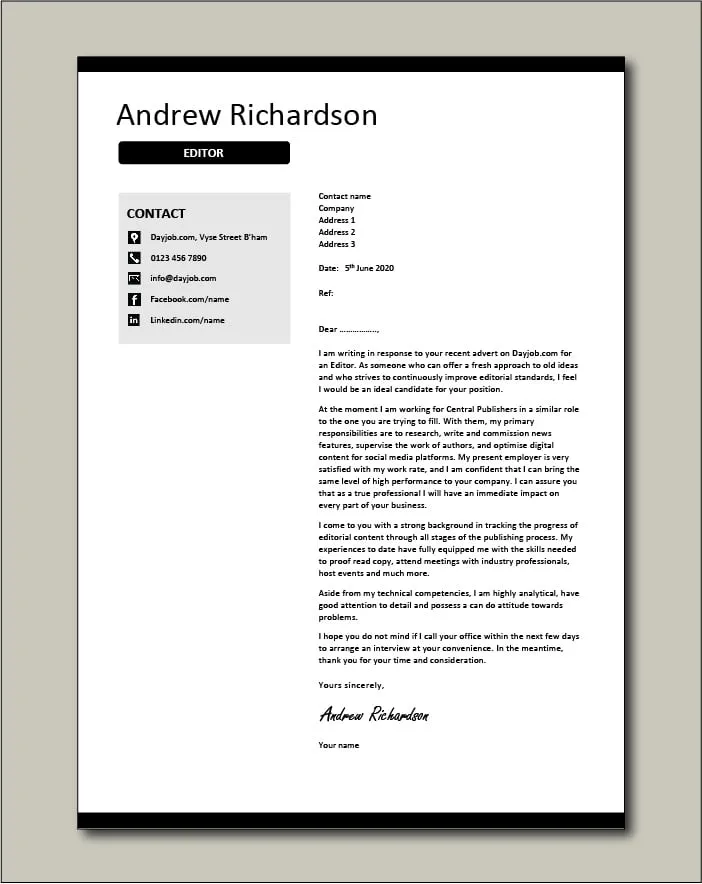
Adhering to journal-specific guidelines is essential for a successful submission. Thoroughly review the journal’s instructions for authors, paying close attention to formatting, style, word limits, and citation styles. Ensure your manuscript adheres to all these requirements. Customize your cover letter to acknowledge and emphasize how you have followed the journal’s specific instructions. If the journal requires specific information in the cover letter, like conflict-of-interest statements or funding acknowledgements, be sure to include them. Review the journal’s guidelines for required information such as author contributions, ethics statements, or copyright information. By demonstrating your attention to detail and commitment to their guidelines, you signal to the editor that you are a serious and professional researcher. This significantly improves your chances of a positive initial review and publication acceptance.
Crafting a Strong Opening and Closing
The opening and closing sections of your cover letter are crucial for making a strong first and lasting impression. Your opening should be engaging and capture the editor’s attention immediately. Start by clearly stating the purpose of your letter and the title of your manuscript. Briefly highlight the significance of your research and its relevance to the journal’s scope. Your closing should reiterate your interest in publishing in the journal. Summarize your key findings and emphasize the importance of your work. Express your gratitude to the editor for their time and consideration. End with a clear call to action, such as requesting that the manuscript be considered for publication. A strong opening and closing ensure that your cover letter is memorable, professional, and effectively conveys your research’s value.
Writing an Engaging Introduction
Crafting an engaging introduction is critical for capturing the editor’s attention from the start. Begin with a concise and compelling statement that immediately explains the topic and significance of your research. Highlight the key problem or question your work addresses. Make your introduction relevant to the journal’s audience. Clearly state the title of your manuscript and the journal to which you are submitting. Briefly summarize the main findings of your research and their potential implications. Use strong, impactful language to convey the importance of your work. The introduction should entice the editor to read further and encourage them to assess your manuscript positively. A well-written introduction sets the tone for the entire letter and establishes a professional rapport.
Concluding with a Call to Action
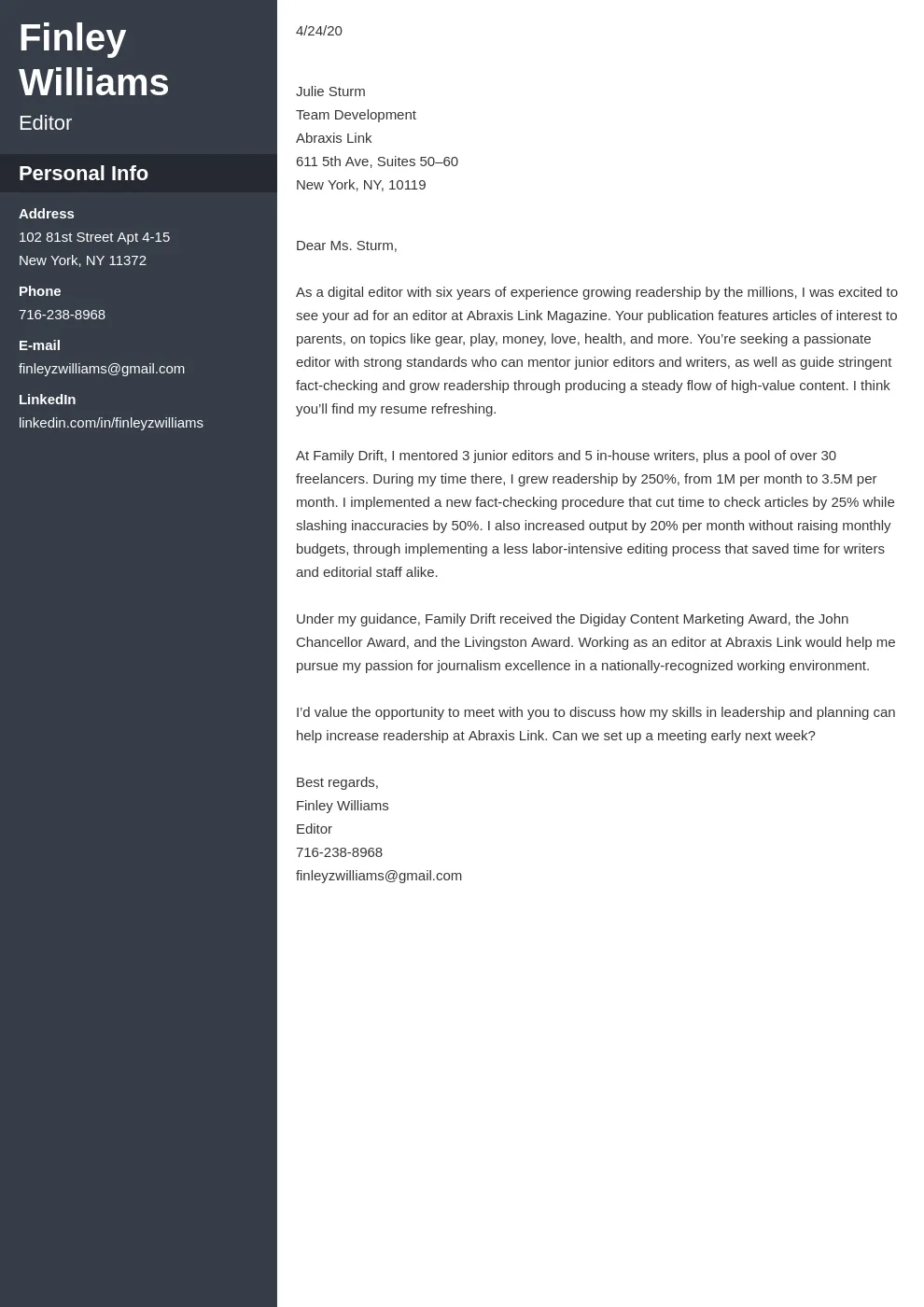
Concluding with a clear call to action is a critical component of your cover letter. Restate your interest in publishing in the journal and reiterate the significance of your research. Express your gratitude to the editor for their time and consideration. Clearly state what action you are requesting from the editor, such as considering your manuscript for publication. Provide your contact information for easy communication. Ensure your tone is professional and confident without being overly assertive. The call to action should be a clear, concise statement that leaves a positive impression on the editor. It reminds them of the value of your work and reinforces your desire for publication. A well-crafted conclusion with a call to action increases the chances of a favorable editorial decision.
Formatting and Presentation Best Practices
Formatting and presentation are crucial for creating a professional and easy-to-read cover letter. Use a standard font, such as Times New Roman or Arial, with a font size of 11 or 12 points. Keep the letter concise, typically one page long. Use clear and concise language, avoiding jargon whenever possible. Structure your letter with logical paragraphs and headings to enhance readability. Proofread carefully for any grammatical errors, spelling mistakes, or typos. Use a professional and formal tone throughout the letter. Ensure your contact information, including your name, affiliation, email address, and phone number, is clearly visible. If the journal requires a specific format, make sure to follow those guidelines. A well-formatted and visually appealing cover letter demonstrates your attention to detail and respect for the editor’s time.
Choosing the Right Tone and Style
Choosing the right tone and style is vital for a successful cover letter. Maintain a professional and respectful tone throughout the letter. Use formal language and avoid slang or overly casual expressions. Tailor your tone to the specific journal and its target audience. Be confident in your writing without being arrogant. Convey enthusiasm for your research and genuine interest in publishing in the journal. Ensure your writing is clear, concise, and easy to understand. Adhere to the journal’s preferred style guide for consistency. Proofread carefully to ensure your tone aligns with your objectives. A well-chosen tone and style create a positive impression on the editor, and it helps you establish credibility.
Proofreading for Errors
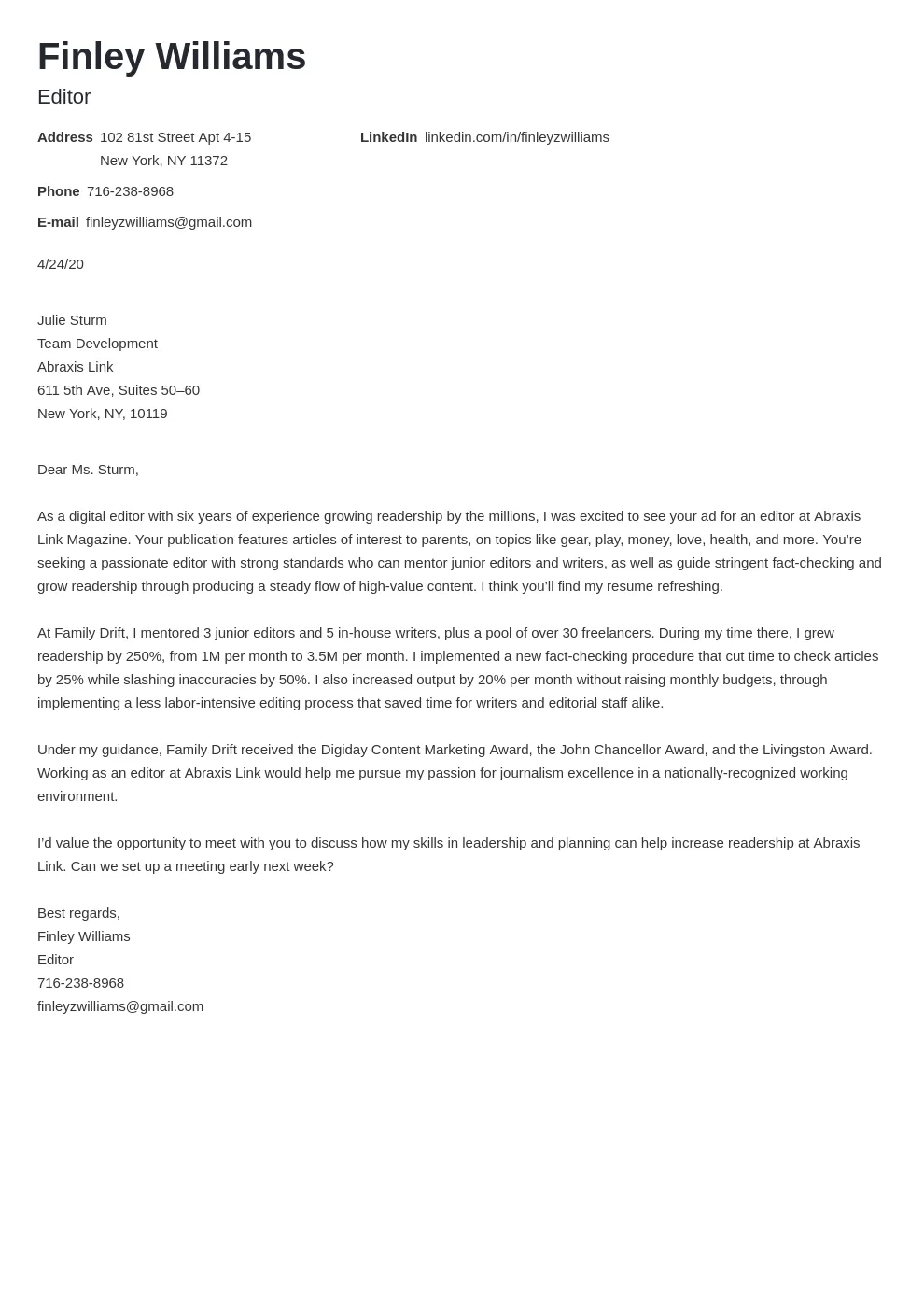
Thoroughly proofreading your cover letter is essential to ensure it’s free from errors. Carefully check for spelling mistakes, grammatical errors, and typos. Verify that all names, titles, and affiliations are accurate. Ensure the language is clear, concise, and professional. Check that your formatting is consistent throughout the document. Consider having a colleague or mentor review the letter for clarity and accuracy. Proofreading is an essential part of the writing process; it reflects your attention to detail and respect for the editor’s time. A polished, error-free cover letter increases your credibility and makes a positive impression.
Maintaining a Professional Tone
Maintaining a professional tone is critical for a cover letter. Use formal language and avoid slang or colloquialisms. Address the editor with respect, using their title (e.g., Dr., Professor) unless you’ve established a prior relationship. Keep your language clear, concise, and straightforward. Be enthusiastic about your research, but avoid exaggerations or overly promotional language. Focus on the importance of your work and its contribution to the field. Avoid sounding overly informal or overly familiar. Maintain a tone that is respectful, credible, and engaging. Ensure that your cover letter reflects your professionalism and attention to detail, as this significantly influences the editor’s perception of you and your work.
Common Mistakes to Avoid
Avoiding common mistakes can greatly improve your cover letter’s impact. One critical mistake is ignoring the journal’s guidelines, so always carefully review and follow their specific instructions. Avoid using generic language; tailor the letter to the journal and your specific research. Refrain from exceeding the word count, as it shows a lack of respect for the editor’s time. Don’t highlight irrelevant content. Make sure to showcase your expertise and credentials, but keep the focus on the research. Steer clear of providing too much background information. It is also important to refrain from using jargon the editor may not be familiar with. Avoid these common pitfalls to ensure your cover letter effectively communicates your research’s value and professionalism.
Ignoring Journal Guidelines
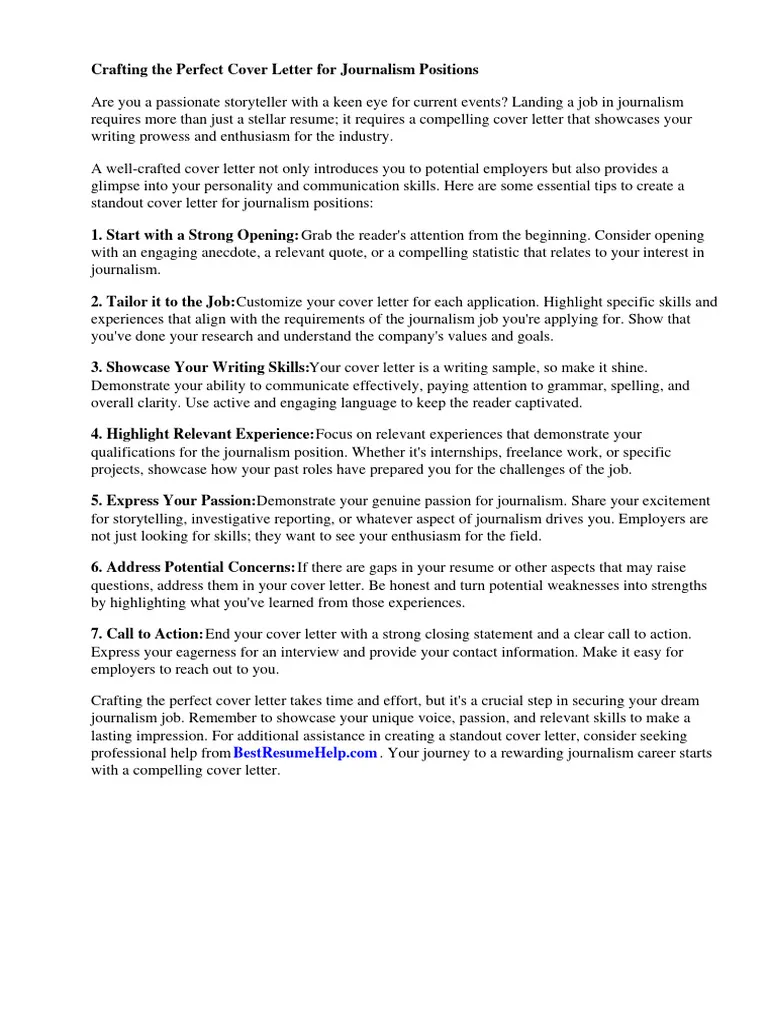
Ignoring the journal’s guidelines is a significant error in cover letter writing. Always carefully review the journal’s instructions for authors before submitting your letter. Pay close attention to formatting requirements, word limits, citation styles, and any specific content requirements. Failure to adhere to these guidelines can lead to immediate rejection, as it indicates a lack of attention to detail and disregard for the journal’s standards. Ensure that your letter follows all the instructions, including those for references, figures, and tables. Customize your letter to meet all the journal’s requirements. Checking and following all the guidelines demonstrates professionalism and increases your chances of a positive review.
Using Generic Language
Using generic language is a common mistake that can undermine the impact of your cover letter. Avoid using vague or generic statements that could apply to any research paper. Tailor your language to the specific journal and your research. Use specific terminology and concepts relevant to your field. Demonstrate your understanding of the journal’s scope, audience, and editorial preferences. Show that you have carefully considered the journal’s aims and requirements. Use strong, descriptive language to highlight your findings and their significance. Replace generic phrases with more specific, impactful statements. When the language is tailored and precise, your cover letter becomes more compelling and demonstrates that you have a genuine interest in the journal and its readers.
Exceeding the Word Count
Exceeding the word count specified by the journal is a sign of poor attention to detail and can lead to immediate rejection. Carefully review the journal’s guidelines for the cover letter word limit and adhere to it. Be concise and focus on the most important information. Avoid unnecessary jargon or overly verbose descriptions. Use clear, concise language to convey your message effectively. Make sure your cover letter is focused and to the point. If you struggle to fit everything within the word limit, prioritize the most essential elements, such as the significance of your research and its relevance to the journal. Exceeding the word limit demonstrates a lack of respect for the editor’s time, and it diminishes the impact of your cover letter.
Highlighting the Right Content
Highlighting the right content is crucial for making a strong impression. Focus on your research’s main findings, significance, and relevance to the journal’s scope. Explain how your work contributes to the field and why it should be of interest to the journal’s readers. Mention any innovative methods, approaches, or perspectives used in your study. Emphasize your research’s novelty and originality, explaining how it differs from previous work. Clearly state the main research question and how your findings address it. Avoid including excessive background information or details that are not directly relevant to the journal’s focus. Tailor your content to show the value of your research and its contribution to the existing knowledge in your field.
Showcasing Your Expertise and Credentials
Showcasing your expertise and credentials is important, but it must be done strategically and within the appropriate context of the cover letter. Briefly mention your relevant qualifications, such as degrees, affiliations, and any notable achievements. Provide context to the reader, and tie your expertise to the research presented. Focus on the significance of the findings. Avoid excessive self-promotion, and make sure your credentials relate to the research you are submitting. The primary goal is to establish credibility and trust, and not to overwhelm the editor with your accomplishments. A well-crafted cover letter strikes a balance between showcasing expertise and highlighting the value of the research itself.
Providing Relevant Background Information
Providing relevant background information is essential for setting the context for your research. Briefly explain the research area, the problem you address, and the existing literature. Give enough detail to help the editor understand the significance of your work without overwhelming them. Keep the background information concise and focused. If you are referencing specific studies, do so in a way that ties them to your work. Always prioritize information relevant to the journal’s scope. The goal is to provide necessary context and to help the editor and reviewers grasp the essence and value of your research.
Mentioning Previous Publications (If Applicable)
If you have previous publications, mentioning them can strengthen your cover letter, particularly if they are relevant to your current submission. Briefly mention previous publications, especially those in the same field or published in reputable journals. This shows your expertise and commitment to publishing. Refer to the publications by name, and briefly mention their impact. Do not overemphasize past publications, as the focus should always remain on the new work. Only include publications that directly relate to your research and demonstrate your expertise. By strategically mentioning previous publications, you can build credibility and show that you are an established researcher.
Seeking Feedback and Review
Seeking feedback and review is a crucial step in ensuring the quality and effectiveness of your cover letter. Ask colleagues, mentors, or experienced researchers to review your letter. Provide your reviewers with the journal’s instructions for authors so they can assess compliance. Ask for feedback on clarity, coherence, and how effectively you convey the significance of your research. Consider their suggestions and revise your letter accordingly. Feedback from others helps to identify errors or areas for improvement. It is an important step to ensure your cover letter is clear, concise, and persuasive. Their input can significantly increase the likelihood of a positive initial review.
Asking Colleagues to Review the Letter
Asking colleagues to review your cover letter is a highly recommended practice. Select colleagues who have experience with publishing in academic journals or who are familiar with your research area. Provide them with a copy of the journal’s instructions for authors and ask them to review the letter. Ask them to assess the clarity of your writing, the accuracy of your information, and the effectiveness of your arguments. Encourage them to offer suggestions for improvement. Value the feedback you receive, and be willing to revise your letter accordingly. Peer review can reveal errors or inconsistencies that you might have missed. Incorporating their suggestions improves the overall quality and persuasiveness of your cover letter, and increases the chances of a favorable outcome.
Using Feedback to Refine Your Letter
Using feedback to refine your cover letter is a key step in improving its effectiveness. Carefully consider all feedback you receive from colleagues, mentors, or editors. Identify any recurring comments or suggestions. Revise your letter to address those comments, such as improving clarity, conciseness, or the organization of your content. If feedback contradicts your intentions, seek clarification from your reviewers and consider how their suggestions might improve your letter. Make the necessary changes to improve it. Proofread your revised letter thoroughly to ensure you have incorporated the feedback accurately. By actively using the feedback you receive, you can improve your cover letter’s impact and increase the chances of acceptance. This step enhances the overall quality and persuasiveness of your letter.
